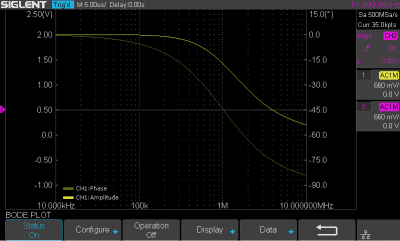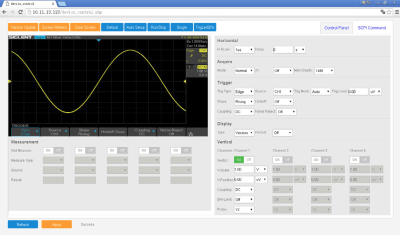Review: Siglent SDS1204X-E four-channel oscilloscope
In practice

The screen is very clear and has various display options, such as selecting the persistence time of a signal and assigning colours depending on the amount of change in parts of the signal.
With the operating buttons, it does take getting used to the fact that there is only one set of rotary buttons for the vertical settings. You first have to select a channel with the adjacent buttons and then the rotary buttons operate on that channel. Four sets of rotary buttons would, of course, have taken up much more room on the front panel, with a two-channel instrument this is still manageable.
Just looking at a signal using the auto-setup is a piece of cake, but for a number of things you will really have to dive into the manual. The signal processing is very fast and thanks to the signal memory of 14 Mpts per converter and combined with the navigation buttons you can quickly scan through a signal.

A handy feature is the option of dividing the signal memory into segments (segmented acquisition). Every time a signal appears that meets the trigger condition that has been set, such a segment is filled. In this way you can take a close look at what is happening in certain signal fragments.


Discussion (0 comments)